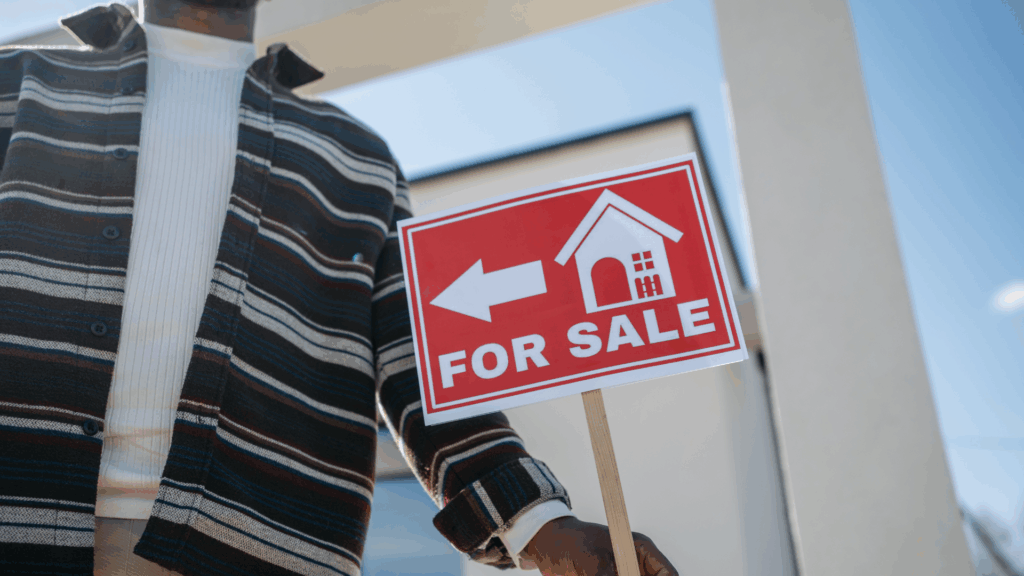- What Makes Property Uninhabitable for Mortgage Lenders?
- Why Won’t Lenders Give Mortgages on Fixer-Uppers in the UK?
- How To Get a Mortgage on an Uninhabitable Home?
- How Much Can I Borrow For A Fixer-Upper in the UK?
- What If the House Has Asbestos, Subsidence or Is Listed?
- Can I Get a Mortgage After Completing Repairs?
- What If I Was Refused For A Mortgage on an Uninhabitable Property?
- Key Takeaways
- The Bottom Line
Can You Get A Mortgage On An Uninhabitable Property?
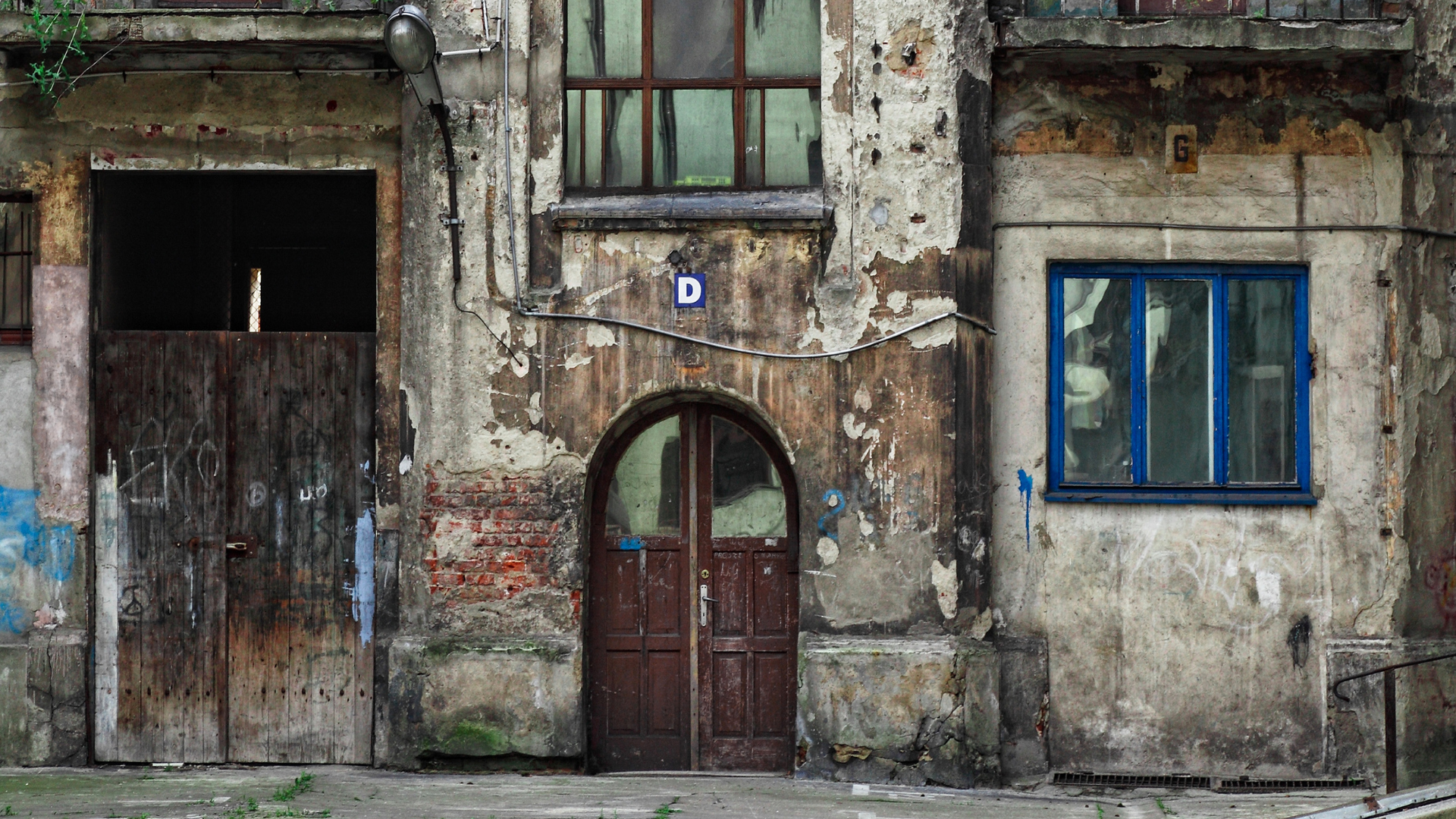
You can get a mortgage for an uninhabitable property, but it’s not as easy as a regular mortgage.
Here’s the thing: Lenders are wary of houses that need a lot of work, so you might need a bigger deposit and a detailed plan to show how you’ll make it livable.
You can also expect to pay higher interest rates since the lender is taking on more risk.
This guide will help you understand the different mortgage options available and the steps you need to take. We cover everything you need to know about mortgages on an uninhabitable property.
What Makes Property Uninhabitable for Mortgage Lenders?
In the UK, an uninhabitable property is a place that’s not safe or suitable to live in. It’s essentially a fixer-upper that needs major work before anyone can move in.
Most mortgage lenders won’t lend on a property that falls short of basic living standards. A property won’t qualify for a mortgage if it lacks these essential features:
- A working kitchen with running water and food prep areas
- A functional bathroom with toilet and shower/bathtub
- A reliable electricity supply and a central heating system to keep it warm.
- Weatherproof exterior with no holes/leaks in the roof or walls
- Secure ground-floor windows and external doors.
- Compliance with local building standards and codes.
- A roof in good repair, and no major structural issues.
- Functioning hot and cold water supply and effective drainage and toilet facilities.
- Freedom from damp, mould, asbestos and pest infestations
In short, the property needs to be safe, secure, and ready to move straight into. Many lenders won’t approve a mortgage if major repairs or renovations are needed beforehand.
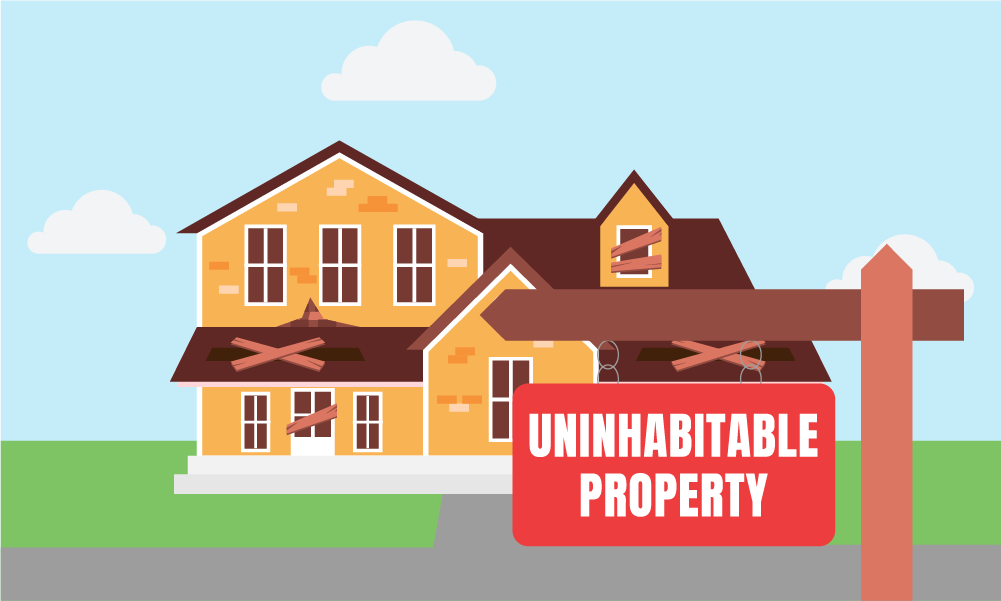
Why Won’t Lenders Give Mortgages on Fixer-Uppers in the UK?
There are a few reasons why lenders shy away from financing uninhabitable properties:
- Tricky to Sell. If a borrower defaults and the lender has to repossess the property, it might be hard to sell an uninhabitable home for a good price. This means the lender might not recoup all the money they loaned.
- Higher Risk of Defaults. Fixing up a fixer-upper can be expensive. There’s a chance borrowers might run out of money before the renovations are done, making it harder to keep up with mortgage payments.
- Less Valuable as Security. Lenders use the property itself as a kind of guarantee for the loan (collateral). If the property is in bad shape, it’s less valuable and secures the loan less effectively for the lender.
How To Get a Mortgage on an Uninhabitable Home?
While most mortgages are for ready-to-move-in homes, there are ways to finance the purchase and renovation of an uninhabitable property.
Here’s a step-by-step guide:
1. Check the Property Thoroughly. Get a full structural survey to understand the work needed. This will identify problems like dampness, subsidence, or structural issues that need fixing before you can move in.
2. Plan the Renovations. Based on the survey, decide if the repairs are manageable. Consider if you’re up for the project or if a different property might be better. Common issues include leaks, unsafe structures, or missing essentials like kitchens or bathrooms.
3. Explore Funding Options. Traditional mortgages usually won’t work for uninhabitable homes. Here are some alternatives:
- Bridging Loans. These are short-term loans to buy and renovate. Once the work is done, you can switch to a regular mortgage. These are quicker to arrange and can cover urgent repairs.
- Second Charge Mortgages. Use the equity in your existing home to secure funds for the uninhabitable property and its renovations.
- Development Finance. For larger projects, like converting a building into flats. This covers both the purchase and development costs.
4. Get Help from a Mortgage Advisor. A good mortgage advisor can be a huge help. They can guide you through the process, find suitable lenders, and explore all financing options. They’ll also help prepare your application to increase your chances of approval.
5. Renovate the Property. Once you have the funding, complete the renovations to make the property habitable. Make sure all work meets building regulations and the lender’s criteria.
6. Apply for a Regular Mortgage. With the renovations done and the property habitable, you can now apply for a traditional mortgage. At this point, the property should meet the lender’s standards for approval.
7. If Initially Rejected, Don’t Give Up. If your first mortgage application is rejected, address the specific reasons the lender gave. You could ask the seller to fix some issues or negotiate a lower price to cover repair costs.
Key Points to Remember
- Always get a detailed structural survey done first to identify and document any problems.
- Look for lenders who specialise in financing uninhabitable properties, as they may have more flexible criteria.
- Have a clear renovation plan, including costs and timelines, as lenders will require this.
- Especially with short-term financing like bridging loans, have a clear exit strategy. This could be selling the property after renovation or refinancing with a regular mortgage.
How Much Can I Borrow For A Fixer-Upper in the UK?
It depends on a few things. Here’s what you need to consider:
1. Property Value and Condition.
The loan amount hinges on the property’s current value and how badly it needs work. Lenders will value it in its current state and after renovations. Since fixer-uppers are worth less, the loan amount will be lower too.
2. Type of Loan
- Bridging loans typically allow you to borrow 70-75% of the property value. This can even reach 100% if you provide extra security.
- Development finance caters to larger projects and covers both buying and renovating. Here, lenders might offer 60-70% of the project’s gross development value (GDV).
Finally, if you have equity in another property, a second-charge mortgage can be an option. The amount you can borrow depends on how much equity you have but typically ranges from 65% to 75% of the equity value.
3. Deposit.
Uninhabitable properties are risky, so lenders often ask for a bigger deposit than usual. You might need 25% or more of the purchase price.
4. Your Finances.
Lenders will look at your income, credit history, and existing debts. A strong financial picture can mean a bigger loan and better terms.
5. Renovation Experience and Exit Strategy.
If you’ve renovated properties before, lenders might lend you more. Having a clear plan to sell the renovated property or switch to a regular mortgage after renovations can also help you borrow more.
Every lender has different rules.
A mortgage broker specialising in uninhabitable properties can help you find the best loan options and borrow as much as possible.
They can also help you present your situation well to lenders, making it more likely you’ll get approved.
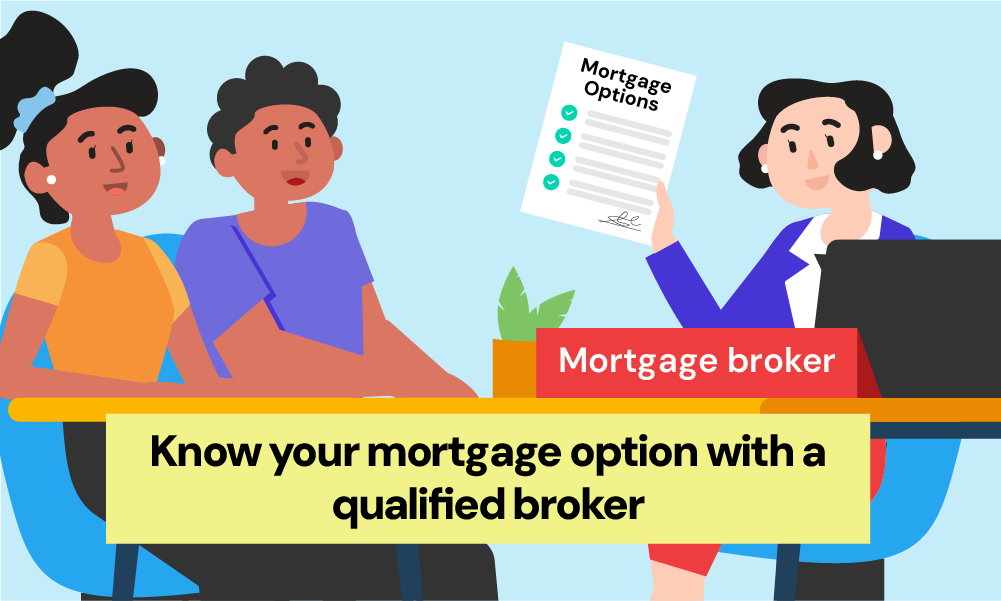
What If the House Has Asbestos, Subsidence or Is Listed?
Properties with asbestos, structural issues like subsidence, or listed/heritage building status can create problems when trying to get a mortgage, even if habitable. Lenders may:
- Require professional surveys and costings to remedy issues
- Impose strict renovation requirements to preserve heritage elements
- Deny the mortgage application if risks are too high
Ultimately, the lender’s main concern is being able to recoup their investment if they must repossess the property.
Any major issues impacting the property’s condition or value could prevent mortgage approval.
Can I Get a Mortgage After Completing Repairs?
Once you’ve finished the renovations and made the property habitable, getting a regular mortgage is usually straightforward.
To do this, you need to remortgage to a standard mortgage. This means switching your loan from a specialist option (like a bridging loan) to a regular mortgage product.
If your initial application wasn’t successful, there are a few ways forward:
- Pay for repairs yourself, and possibly negotiate with the seller to lower the asking price to account for these repairs.
- Asking the seller to complete repairs, increasing the sale price.
- Using a bridging loan to cover purchase and repair costs, then remortgage.
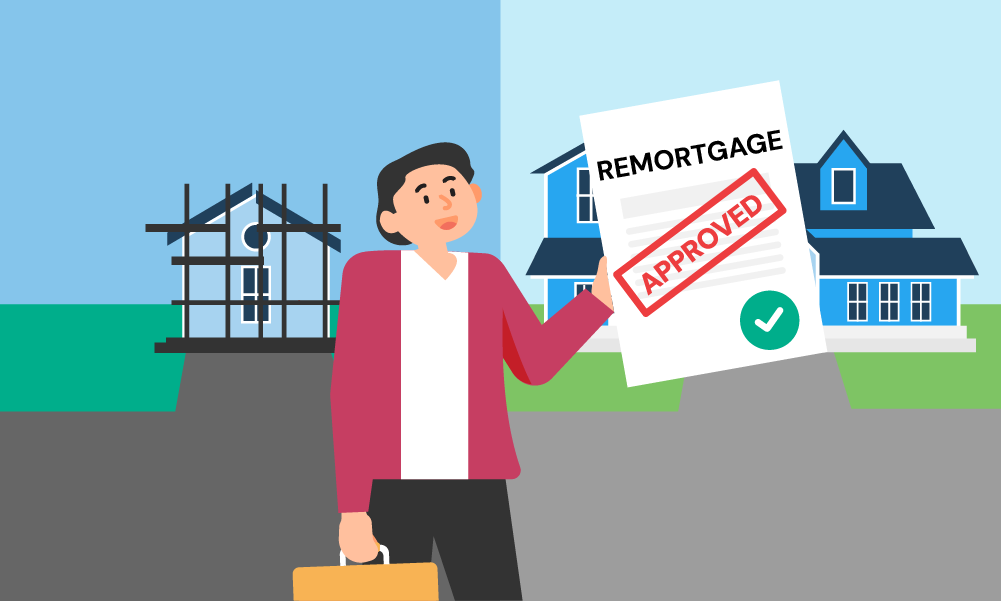
What If I Was Refused For A Mortgage on an Uninhabitable Property?
Yes, you can still get a mortgage on an uninhabitable property even if you’ve been previously refused. Here’s how:
- First, look for specialist lenders. Unlike traditional lenders, they understand the potential of uninhabitable properties and offer tailored mortgage products.
- Next, present a solid renovation plan. Outline the costs, timelines, and how you’ll make the property habitable. This shows lenders you have a clear strategy.
- Improve your financial profile. Boost your credit score, reduce debts, and save more. A strong financial standing makes you a more attractive candidate.
- Consider bridging loans. These short-term loans can fund the purchase and renovation. Once habitable, refinance into a standard mortgage.
- Seek professional advice. A mortgage broker specialising in high-risk properties can connect you with the right lenders and guide you through the process.
- Finally, show the potential value. Provide a professional valuation estimating the property’s worth after renovation. This helps convince lenders of its investment potential.
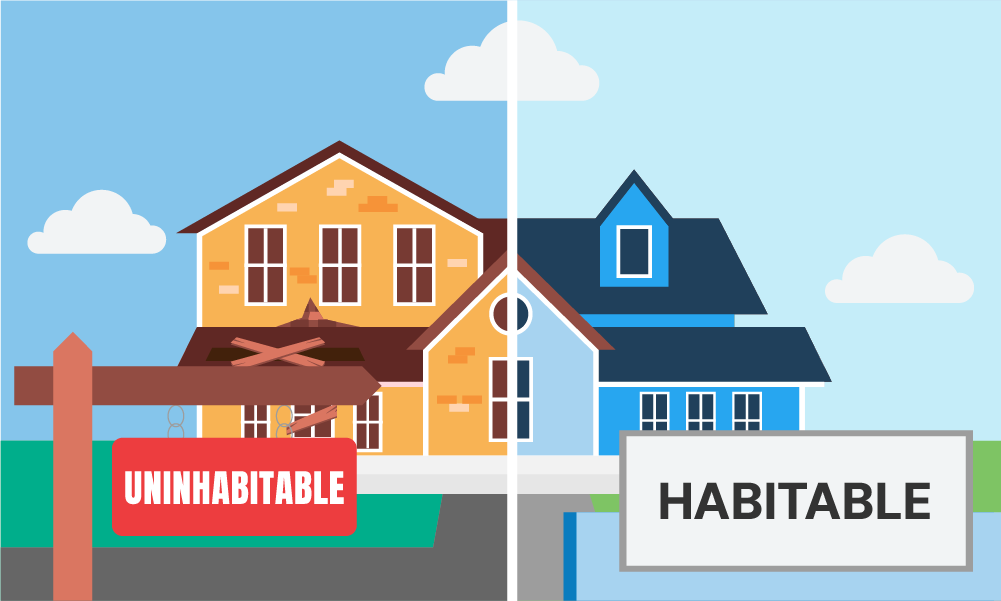
Key Takeaways
- You can get a mortgage for an uninhabitable property, but it requires a bigger deposit, higher interest rates, and a clear renovation plan.
- A property is uninhabitable if it lacks essentials like a working kitchen, bathroom, or weatherproofing, making it unsafe to live in.
- Lenders avoid uninhabitable properties due to high default risk, difficulty in resale, and low collateral value.
- To finance an uninhabitable property, consider bridging loans, second charge mortgages, or development finance.
- If refused initially, look for specialist lenders, improve your financial profile, and present a solid renovation plan.
The Bottom Line
In most cases, you can’t get a residential mortgage directly on an uninhabitable house. But there are special loans that let you buy the place, fix it up, and then switch to a normal mortgage after.
It’s definitely more work buying a house needing major repairs, but it can be worth it if you’re up for the challenge.
A mortgage broker can be a lifesaver in all this. They’ll find the best loan for you, sort through the tricky bits, and basically save you a whole lot of hassle.
Need a broker? Get in touch. We can connect you with a qualified broker to help you figure out the best financing options for buying that fixer-upper.
Get Matched With Your Dream Mortgage Advisor...

Frequently asked questions
How do you determine the value of an unfinished house?
To value an unfinished house, assess the current construction progress and estimate the cost to complete it.
A lender-appointed valuer usually handles this. They consider the land’s value based on location and size. Next, they estimate the house’s finished value using nearby similar properties.
The cost to finish the house is subtracted from this potential value to determine the current value. This process often involves stages with periodic valuation visits.
What should I do if I'm buying land with an uninhabitable property?
If you’re buying land with an uninhabitable property, hire a surveyor and a structural engineer to assess the condition. Check local zoning laws and understand the costs of repairs.
Consider bridging loans if a traditional mortgage is difficult. This short-term loan can provide quick funds for repairs. Use the sale of the land as your exit strategy.
Consult a real estate attorney to handle legal aspects and ensure a smooth purchase.
What constitutes a kitchen for mortgage purposes?
One area mortgage companies are quite strict on is the kitchen. Their definitions can vary, but generally expect them to require:
- Running water supply and drainage
- Safe food prep areas like countertops
- Storage areas like cabinets
- Some basic appliances to cook food
An empty room or one simply roughed-in for a future kitchen likely won’t meet habitable standards. The kitchen is considered essential for basic healthy living.
Why might a property not qualify for a mortgage?
A property might not qualify for a mortgage if it’s in poor condition, incomplete, or in a high-risk area. Legal issues like unclear ownership or zoning violations can also disqualify it. Lenders require properties to meet specific standards for security.
This article has been fact checked
This article was created, checked, and verified by the expert team at Money Saving Guru. Trust us, you’re in good hands.

